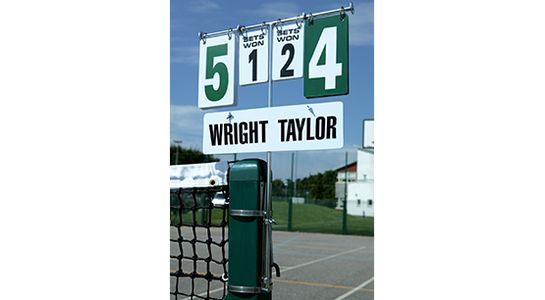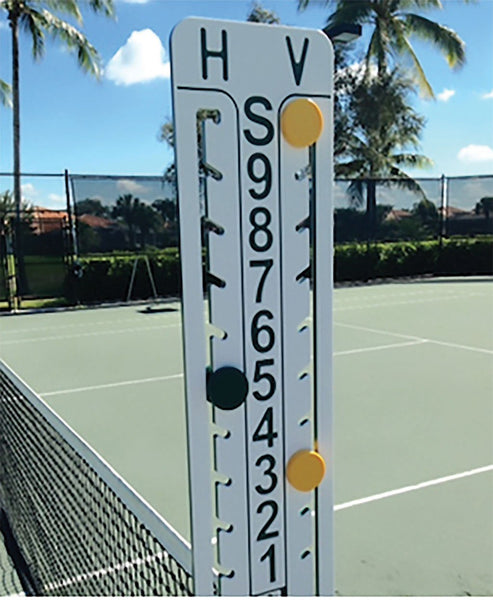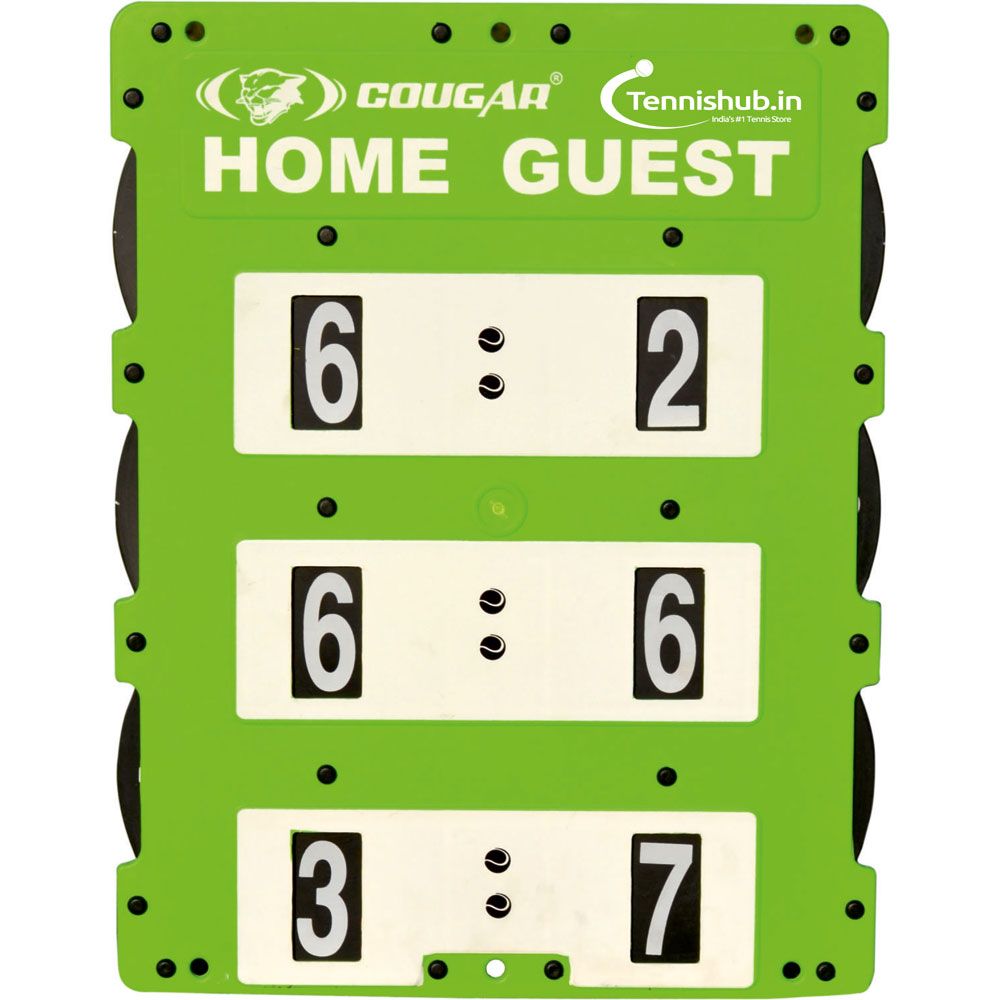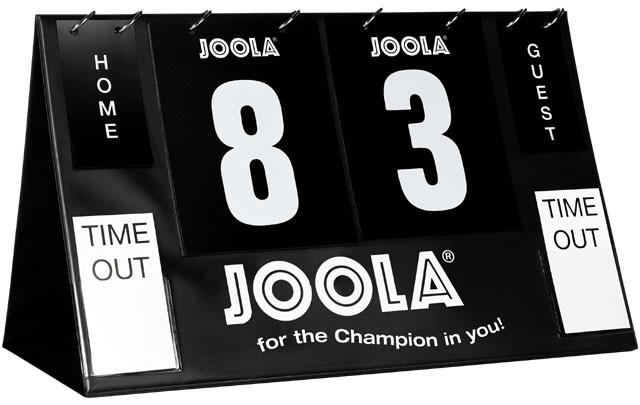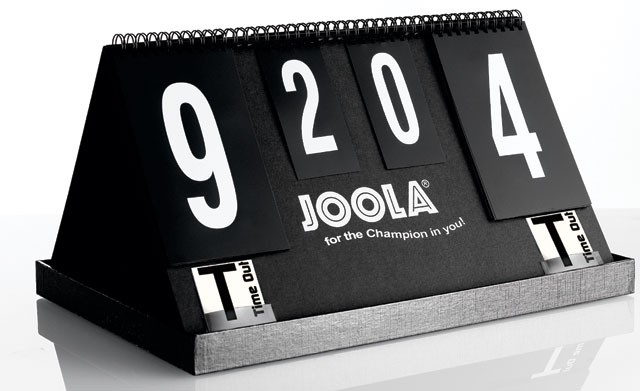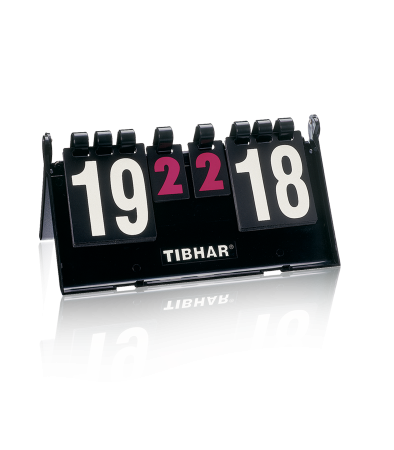tennis scorer
Scoring Right Portable Tennis Racquet and Paddle Scorekeeper – Easily Mounted Score Board to Keep Score of Points, Games, and Sets - ITF Conforming and Lightweight - Weighs 1.9g - Black
Yosoo Health Gear 4-Digit Scoreboard, Tabletop Score Flipper Manual Sports Competition Score Board, Portable Flip Scoreboard for Table Tennis Basketball Badminton Volleyball
Showing 1–36 of 39 results
A “tennis scorer” can refer to either a person or a device used to keep track of the score during a tennis match.
1. **Person**: In professional tennis matches and some amateur matches, an official scorer or chair umpire announces and records the score after each point. They ensure that the score is correctly recorded and communicated to the players and audience.
2. **Device**: A tennis scorer device can be anything from a simple manual mechanism attached to the net post, allowing players to slide markers to represent games won, to electronic scoreboards that display point-by-point updates in real-time. In recent years, there are also apps available for smartphones and smartwatches that let players keep score and even analyze their matches.
In either context, the main objective is to accurately track and display the progression of a tennis match, which has a unique scoring system. Tennis matches are scored by points, games, and sets, and understanding this system is crucial for both the person or device responsible for scoring.
Let’s delve deeper into the device aspect of tennis scorers:
### Manual Tennis Scorer Devices:
1. **Net Post Scorer**: These are often simple, mechanical devices attached to the net post. Players can slide markers or rotate dials to represent the number of games won in a set. It provides a visual representation of the game score for both players and spectators on the court. They are particularly useful in club matches or friendly games where there’s no official scorer.
2. **Wristband Scorers**: Some players use wristband scorers, which are essentially wearable bands with scoring mechanisms. These allow players to adjust the score without moving to the net, making them quite convenient.
3. **Flip Cards**: Larger than net post scorers, flip cards are often used in semi-professional matches or school tournaments. They can be placed at the side of the court and display game and set scores using large numbers that are easy to read from a distance.
### Electronic Tennis Scorer Devices:
1. **Electronic Scoreboards**: These are most commonly seen in professional tournaments. They provide real-time updates of scores, displaying points, games, and sets. Some even show player statistics, serve speeds, and other relevant match information.
2. **Smart Scoring Devices**: Advanced electronic devices can be attached to the net or placed at the baseline. They often come with sensors that can detect serves, faults, and other game events, and automatically update the score. Some can even connect to a smartphone app for additional features.
3. **Scoring Apps**: With the proliferation of smartphones and wearables, several apps have been developed to help players keep score. Players can tap the screen to update the score after each point. Many of these apps also offer additional features like match statistics, player profiles, and even video recording options for match analysis.
### Advantages of Tennis Scorer Devices:
1. **Accuracy**: Especially with electronic devices and apps, there’s less room for human error in recording scores.
2. **Convenience**: Players don’t have to rely on memory or verbal communication to keep track of scores.
3. **Analysis**: Modern electronic devices and apps often provide statistical analysis, helping players understand their performance and areas of improvement.
4. **Engagement**: For spectators, electronic scoreboards or even manual flip cards make it easier to follow the progress of the match.
In conclusion, tennis scorer devices, whether manual or electronic, play an essential role in ensuring the smooth progression and understanding of tennis matches. Their design and functionality have evolved over time, and they continue to be an integral part of the sport.

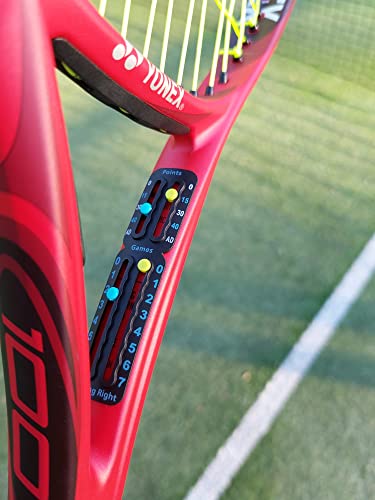











![Vermont Fence Mounted Tennis Scoreboard [3 Sizes]](https://nwscdn.com/media/catalog/product/f/e/fencemountedtennisscoreboard-family-main.jpg)
![Wooden Tennis Scoreboard [Freestanding]](https://nwscdn.com/media/catalog/product/n/u/number-cards-heavy-duty-plastic.jpg)
![A4 Sports Pitch & Court Number Plates [1-12]](https://nwscdn.com/media/catalog/product/a/4/a4_tennis_court_sports_pitches_number_plate_number_1_strong_pvc.jpg)










